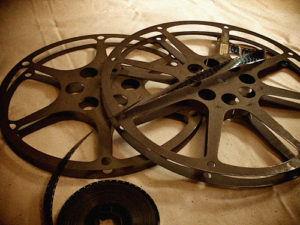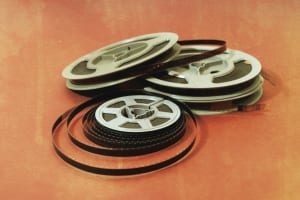Film Transfer: How to Convert Film to DVD
When the time comes to convert film to DVD, it can often times be a time consuming investment depending on which route you take. Proper film transfer involves an extensive process that includes cleaning, splicing, preparing, and reconditioning old film reels to ensure they convert properly to DVD.
Film reels were used all the way up the 1980’s by both amateurs and professionals. However, due to technological advancements in the video and media industry, these films became obsolete. As a result, there’s often an abundance of 16mm and 8mm film that goes un-converted and sometimes forgotten.
Today, films are made digitally although there is significant number of old films still lying around. For some individuals and professionals, there is a need to convert film to DVD and digital files so that can be used with modern technology.
Film Conversion Solution
The need for film conversion came about as digital formats became the new normal. In turn, film owners started seek solutions for transferring 8mm film and 16mm film to DVD and digital files alike. Both a film’s video and audio can be actually changed into digital format so that can viewed with modern technology. Additionally, converting film to DVD can easily be managed with an enhancement in both the video and audio quality.
When you convert old film to a digital format, you get to once again experience the memories that were made during past generations. The current film industry has made a significant number of advancements in technology and capabilities to convert old film reels to DVD. In many media conversion labs, the film reels are thoroughly cleaned and any necessary repairs are made before the film conversion process begins. Afterward, the film is then seamlessly converted into a digital format with the utmost care and handling.
Preserving Old Memories With Film Transfer
Old films like 8mm, 16mm and 35mm were considered very popular video and photo recording formats in the past days. However, these old films had a multiple problems in the way they could be viewed as well as preserved. These films and home movies can be lost because of light exposure, moisture, heat and age because of their frailty, delicacy and susceptibility of deterioration. Each day that goes by, the film fades.
Today, it is very popular to convert and preserve the old memories and content found on 8mm or 16mm films into modern media like DVDs, MP4 digital files, and other convenient means. Additionally, it’s an extremely affordable solution to preserve meaningful treasures of the past. One DVD disc can fit a number of films, which controls how much money you spend on those storage devices.
Converting Old Film to DVD at Home
With the technology available today, you have a number of choices in converting film to DVD. However, there are positive and negative aspects to doing your own film transfer at home. Doing your own film transfer and creating your own DVD can save you money. In many cases (depending on the level of technology you have), it is less expensive than going to a professional film conversion service to have the job done for you. But as we mentioned earlier, converting film reels is a step-by-step process that takes both time and care.
If you do decide to convert film to DVD at home, the very first step is to clean the old film reels with a non-chemical cleaner. This is a very important step since it helps remove all dust particles.
Next, the 8mm film or 16mm film is passed through a professional projector, such as the RCA TP-66, which has a video camera mounted. This step converts your 8mm film to DVD format. The RCA TP-66 minimizes flicker because it uses a sophisticated technique to synchronize film to video and if you avoid this step, it will eventually cause a flicker. You will need to adjust the light and control the color when this happens. If you take time to do this right, then the appearance of your original films can actually be improved when converted to DVD.
Lastly, the film content is processed through digital filters. This typically enables the quality to be better on a new DVD than on original film. You can divide the film into chapters and create menus so individuals playing the DVD can skip from one chapter to another. Additionally, you can choose backgrounds, add titles, and select background music for your new DVD.
Hiring a Professional for Film Transfer Service
Professional film conversion services can better ensure that the job is done professionally right from the beginning. Film and video transfer services from companies like Current Pixel will thoroughly look for any damaged, broken films and conduct the digital film transfer for optimal quality conversion. You can actually save yourself a lot of time by hiring a professional film to DVD transfer service.
Employing a professional is more convenient than at-home service and as we know that film transfer process is extremely complicated and it demands technical knowledge as well as sophisticated equipment. For the best possible outcome, converting film to DVD also requires some experience and the right equipment (that may not always be at your disposal when doing it at home.) Thus, video and film transfer experts can offer this and more.
Film transfer labs can give you digital files of your preference and if anything happens to your DVD. You can take these files to any video duplication lab to create new DVDs, or enjoy watching your content on a computer or tablet. There are many companies, both local and national, that can transfer 8mm film and 16mm film to DVD at affordable rates. Whatever option you choose, be sure to take the time to fully understand the nature of the process, or service, your interested in the most.